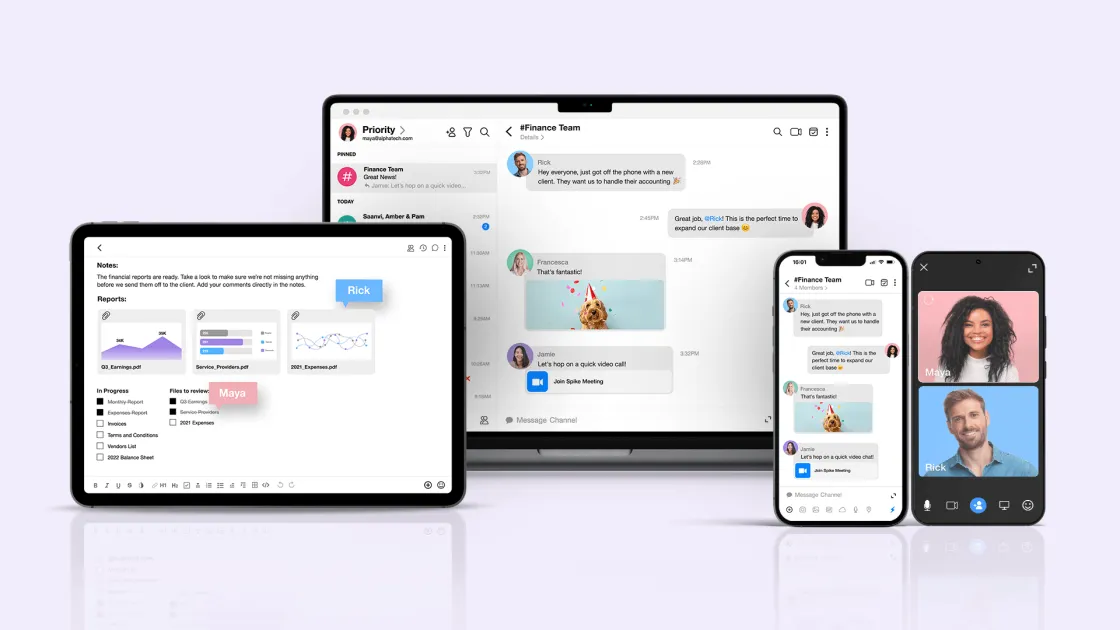The Ultimate Guide To Employee Engagement

Employee engagement is a hot topic in the corporate world more than ever, with entire teams built around it, but what is employee engagement? Think of it as the secret sauce that can transform your workplace from good to great. Intrigued? You should be! Companies with the highest employee engagement rates are 21% more profitable than their peers.
In this fast-paced business environment, keeping your team satisfied and genuinely invested in their work is more than a nice-to-have—it’s critical. Why? Because when your employees are truly engaged, they bring their best selves to work every day, driving your business higher. It’s like unlocking a level of productivity and enthusiasm you didn’t know existed.
But let’s face it: understanding and encouraging employee engagement can feel like navigating a maze. What exactly does it mean? How do you measure it? And most importantly, how can you fix it if you don’t have it? That’s exactly what we’re diving into in this guide. We’re here to unpack the concept of employee engagement for you – from its definition to its vital role in your organization’s growth as worldwide, only an estimated 21% of the workforce is actively engaged at work.
Whether you’re a team leader, a front-line manager, or a People Business Manager, this guide is tailored to help you understand the nuts and bolts of employee engagement. We’ll explore its importance, the main drivers responsible for it within an organization, the key outcomes, and practical strategies to improve it.
By the end of this guide, you’ll grasp the importance of employee engagement and be armed with actionable insights to elevate your team’s performance and morale.
What Is Employee Engagement?
Imagine it as the magic ingredient transforming a typical workday into an exciting and meaningful experience for your employees. It’s about how connected, enthusiastic, and committed they feel toward their work, their team, and your organization. It’s the difference between employees who just show up and those who bring their A-game daily.
But how do you know if your employees are truly engaged? Here are some tell-tale signs to watch:
-
Motivation
Engaged employees are those go-getters and high achievers who always look for ways to excel in their roles.
-
Communication
These are the folks who communicate openly and effectively. They’re not shy about sharing ideas, giving feedback, or having meaningful conversations.
-
Commitment
Think about those team members who are in it for the long haul at your company. They show a strong commitment to the goals and values of the organization and are more likely to stick around, even when things get tough.
-
Diligence
Engaged employees don’t just do their job; they do it purposefully. They pay attention to detail, take pride in their work, and consistently look for ways to improve their craft.
-
Team Spirit
They are the glue that holds the team together. Engaged employees collaborate effectively, support their colleagues, and contribute positively to team dynamics.
In a nutshell, employee engagement isn’t just about job satisfaction or a hefty paycheck. It’s about fostering a work environment where employees are emotionally invested and motivated to contribute to the organization’s success. When your employees are engaged, they’re not just working for you; they’re working with you to achieve something great.
So, why is this important? Because an engaged workforce is the backbone of a thriving company. When your employees are on board and in sync with your vision, there’s no limit to what you can achieve together. Let’s dive into why this matters in the next section.
Why Is Employee Engagement Important?
Keeping your employees engaged is not just a nice-to-have; it’s a must-have for your business’s health and success. Engaged employees are the lifeblood of any thriving company. Let’s break down why:
-
Lower Employee Churn
Engaged employees are likelier to stay with your organization. This means less time and money spent recruiting, hiring, and training new staff members.
-
Higher Job Satisfaction
When employees are engaged, they’re happier and more satisfied. This leads to a more positive work environment and a more robust company culture.
-
Improved Performance
This is a big one with engaged employees. Engaged employees are more productive and produce better quality work.
-
Increased Revenue
It all adds up – higher productivity, better performance, and lower turnover rates contribute to increased revenue for your company.
-
Higher Customer Retention
Engaged employees often go the extra mile, leading to better customer service and higher customer satisfaction. Engaged and happy employees make for satisfied customers!
Employee engagement is a strong driver of business success. Investing in employee engagement isn’t just good for your employees; it’s crucial for your bottom line.
Who Is Responsible For Employee Engagement?
When it comes to fostering employee engagement, it’s not a one-person job. It’s a collective effort, a symphony where everyone plays a crucial part. Here’s how the roles break down:
-
•
Company Leadership
The company leaders are responsible for setting the tone. They drive the company culture, establish overarching strategies, and model the values they want to see. Their vision and actions set the course for the entire organization.
-
•
People Team
Think of the People Team as the conductors. They handle the individual issues and fine-tune the strategies set by the C-suite. HR develops policies, programs, and initiatives that directly influence employee engagement.
-
•
Department Managers & Team Leaders
These are your on-ground and front-line cheerleaders. They implement the strategies within their teams, provide support, and ensure team members are aligned with the organization’s goals. Their day-to-day interactions are vital in fostering a culture of engagement.
-
•
Employees Themselves
Yes, employees also have a hand in their engagement! They are responsible for their level of involvement and the energy they bring to their roles. But, it’s up to managers to ensure they have the necessary resources and a conducive environment.
What Are the Main Drivers of Employee Engagement?

So, what fuels employee engagement? Here are the key drivers:
-
•
Communication
Clear, honest communication within teams and between different levels of the hierarchy is crucial. It’s about creating an environment where everyone feels heard and informed.
-
•
Recognition
Everyone wants to feel valued. Acknowledging employee contributions, celebrating successes, and providing constructive feedback are essential.
-
•
Career Development Opportunities
Growth is critical. Opportunities for professional development and clear paths for promotion keep employees motivated and invested.
-
•
Resources and Tools
Employees need the right tools to succeed. This includes everything from the physical work environment to technology and support systems.
How to Improve Employee Engagement
By understanding the key drivers of engagement and implementing thoughtful, targeted strategies, leaders and managers can unlock the full potential of their teams, whether through effective communication, recognition of efforts, or providing growth opportunities; boosting employee engagement is about creating a workplace where every team member feels valued, heard, and integral to the organization’s mission.
Improving employee engagement can seem daunting, but it’s all about focusing on the right areas:
-
•
Foster Open Communication
Encourage transparency and regular check-ins. Create spaces for employees to voice their opinions and ideas.
-
•
Provide Recognition and Feedback
Celebrate achievements, no matter how small. Provide feedback that helps employees grow and feel valued.
-
•
Offer Development Opportunities
Invest in training programs, mentorship, and career progression paths.
-
•
Equip Teams with the Right Tools
Ensure your teams have the resources and support to perform their roles effectively.
How to Measure Employee Engagement
Measuring employee engagement is essential for any organization aiming to create a vibrant and productive work environment. It’s not just about counting smiles or tracking attendance; it’s a deeper dive into understanding how connected and committed employees feel toward their work and the company.
Organizations can gain valuable insights into the health of their workplace culture by effectively measuring engagement through surveys, one-on-one meetings, and observing behavior in company activities. This process enables leaders to find areas of strength and pinpoint opportunities for improvement, ensuring that strategies for enhancing engagement are data-driven and targeted. What doesn’t get measured doesn’t get done.
Employee recognition awards for hard work are an excellent way to recognize and motivate employees, contributing to higher engagement and a sense of appreciation within the team.
Understanding the level of employee engagement is the first step in building a more motivated, satisfied, and high-performing workforce, ultimately driving the organization towards more tremendous success and fulfillment.
Here are a few easy ways to measure employee engagement:
-
•
Surveys
Regularly conduct engagement surveys to gauge employee voice and employee sentiments.
-
•
One-on-One Meetings
Personal meetings can provide insights that surveys can’t capture.
-
•
Feedback Channels
Create channels for continuous and anonymous feedback.
-
•
Employee Churn Rates
High turnover can be a sign of low engagement.
-
•
Attendance and Engagement Non-Mandatory Events
Participation in optional work events can indicate engagement levels.
-
•
Company Culture Assessment
Though intangible, People teams can assess the overall culture through observations and private conversations.
Employee engagement isn’t just another item on the company to-do list. It’s a critical aspect of your business strategy that impacts every facet of your organization. By understanding its drivers, who is responsible, and how to measure it, you can create a workplace where engagement isn’t just a goal but a natural part of your company culture. Let’s make the workplace where we have to be and where we want to be.
How Spike Empowers Team Leaders to Enhance Employee Engagement

Spike is a game-changer for team leaders looking to boost employee engagement. How does it do this? By unifying communication and collaboration in one intuitive platform. Let’s break down how Spike can revolutionize how teams work and interact.
A Unified Feed for All Your Work
Spike combines emails, chats, channels, and meetings into a seamless feed. This integration means no more toggling between multiple apps or losing track of key conversations. The result? A more streamlined, efficient, and engaged working method.
Spike is not just a communication tool; it’s a comprehensive platform that encourages a culture of employee engagement through seamless collaboration, unified communication, and next-generation features. By adopting Spike, team leaders can significantly enhance employee engagement and productivity of their teams.
Wrap-Up
Cultivating employee engagement is a necessary effort that involves company leadership, HR/People team, managers, team leaders, and employees themselves. The key drivers of employee engagement include clear communication, recognition, career development opportunities, and providing the right resources and tools.
Improving employee engagement requires focusing on open communication, recognition and feedback, development opportunities, and equipping teams with the right technology tools to succeed. Measurement is also crucial, and organizations can use surveys, one-on-one meetings, open feedback channels, turnover rates, and company culture assessments to measure employee engagement.




